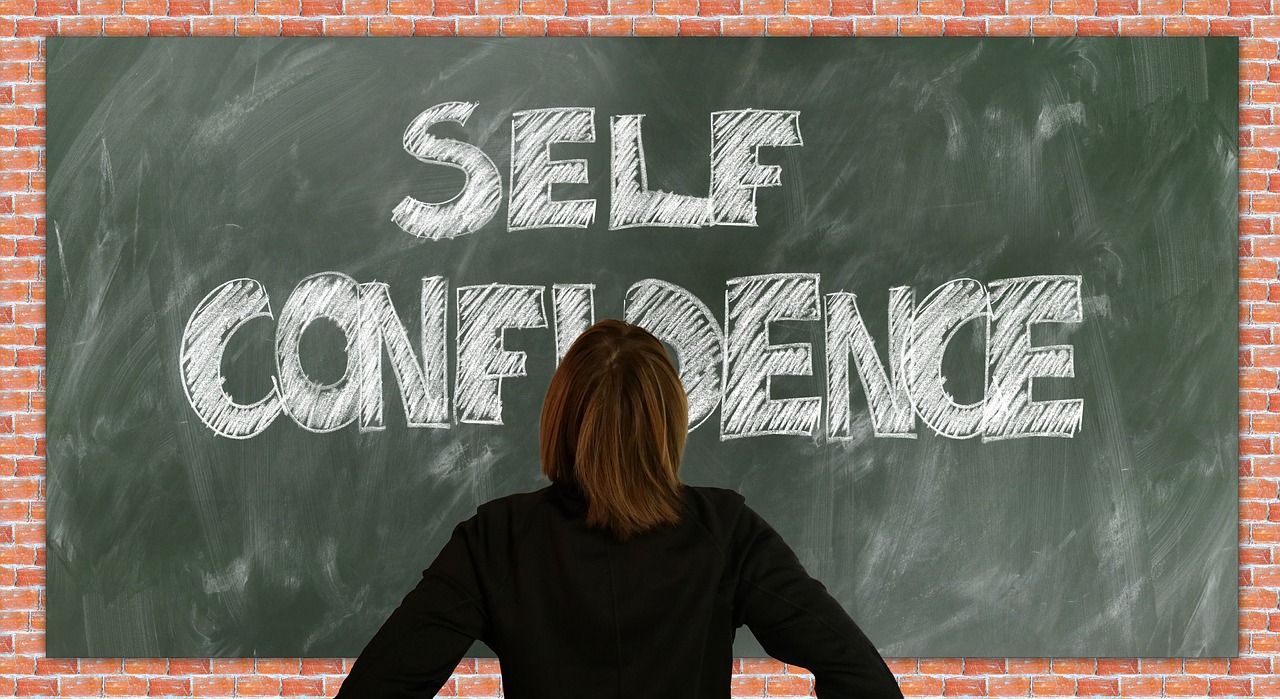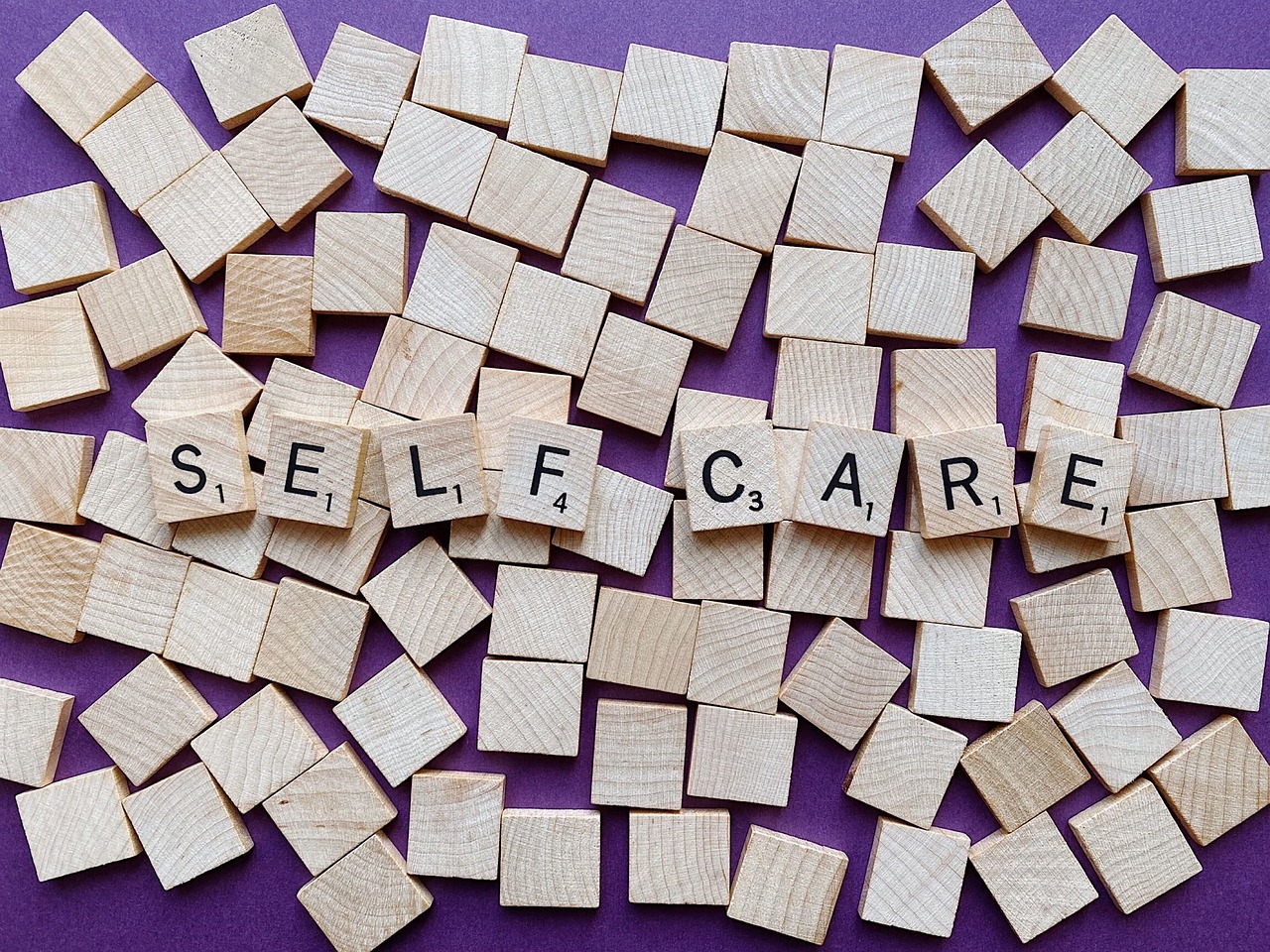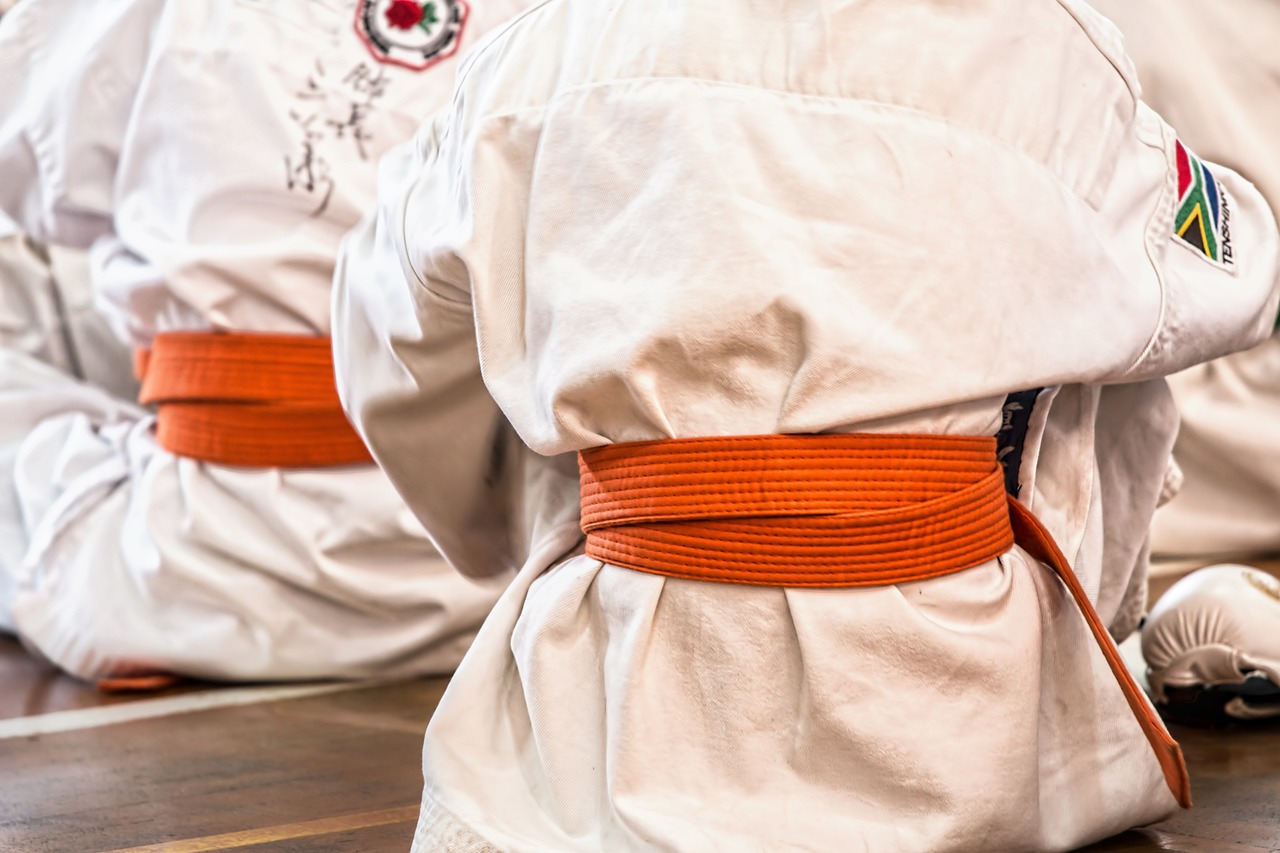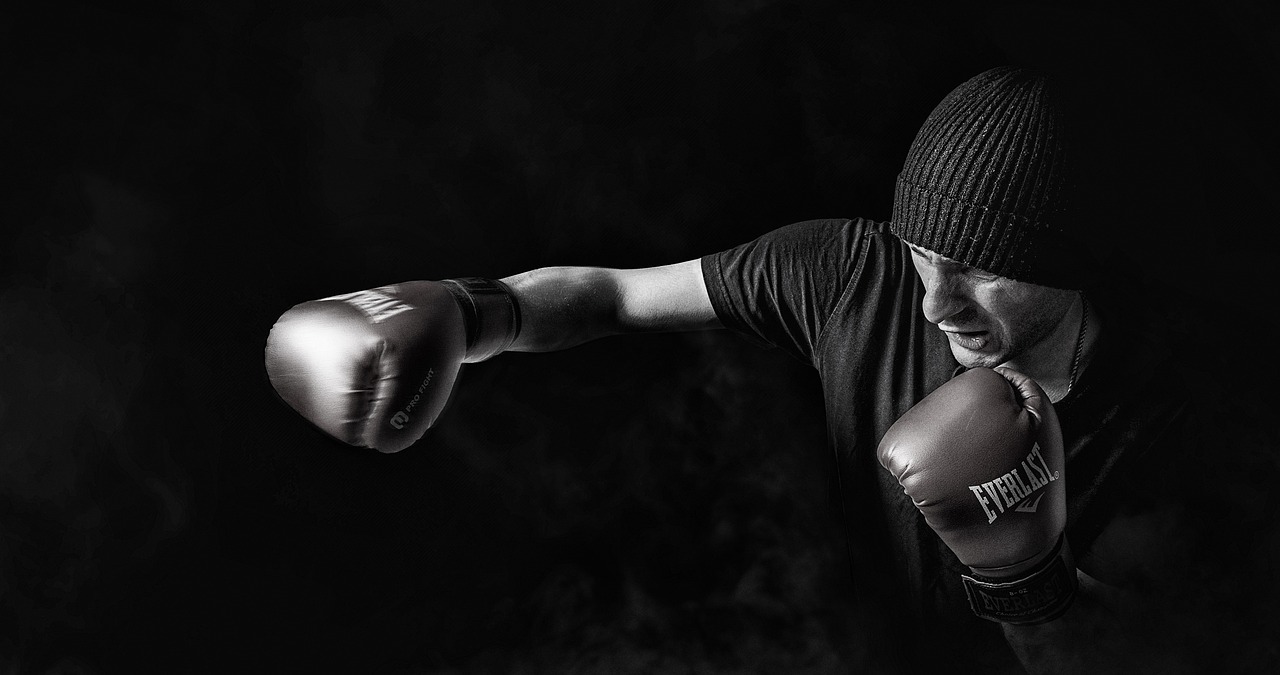Are Self-Defense Techniques Useful in Bully Situations?
Bullying is a pervasive issue that affects individuals of all ages, and it can leave lasting emotional scars. The question often arises: are self-defense techniques truly effective in these situations? The answer is not straightforward, but it is essential to consider the various aspects of self-defense beyond just physical confrontation. Self-defense techniques can empower individuals, providing them with the tools to stand up against bullies, both verbally and physically. They can also foster a sense of confidence and resilience that is crucial in facing such adversities.
In a world where bullying can happen anywhere—from schools to workplaces—understanding how self-defense techniques work can be a game changer. It's not just about throwing punches or executing fancy moves; it’s about learning how to navigate confrontations effectively. This includes recognizing when to stand your ground and when to walk away. The psychological benefits of self-defense training can be just as important as the physical techniques themselves. Victims often feel isolated and powerless, but self-defense training can help restore their sense of agency.
Moreover, self-defense techniques can serve as a deterrent. When a potential bully sees that their target is equipped with skills and confidence, they may think twice before engaging. This psychological shift can lead to a decrease in bullying incidents overall. It’s like putting on a suit of armor; while you may not need to use it, just knowing it’s there can provide a sense of security.
Additionally, self-defense is not solely about the individual; it can also impact the community. When self-defense techniques are taught in schools or community centers, they can create a culture of support and empowerment. Bystanders can learn how to intervene safely and effectively, transforming them from passive observers into active participants in combatting bullying.
In conclusion, self-defense techniques are indeed useful in bully situations, but their effectiveness goes beyond physical skills. They provide emotional and psychological empowerment, foster community support, and can significantly alter the dynamics of bullying. The journey to overcoming bullying starts with understanding these techniques and recognizing their potential to change lives.
- Can self-defense techniques prevent bullying? - While they may not completely prevent bullying, they can empower victims to stand up for themselves and deter potential bullies.
- Do I need to be physically strong to use self-defense techniques? - Not necessarily. Many self-defense techniques focus on strategy and leverage rather than brute strength.
- What if I don’t want to engage physically? - There are various verbal self-defense strategies that can help you de-escalate a situation without physical confrontation.
- How can bystanders help in bullying situations? - Educating bystanders on self-defense techniques can empower them to intervene safely and support victims.
- Is self-defense training suitable for all ages? - Yes, self-defense training can be adapted for different age groups and skill levels.

The Psychology of Bullying
Understanding the psychological factors behind bullying is crucial for anyone looking to combat this pervasive issue. At its core, bullying is often driven by a complex mix of insecurity, power dynamics, and social influences. Bullies may act out due to feelings of inadequacy or a desperate need to assert dominance over others. This power play can manifest in various forms, including physical aggression, verbal taunts, or social exclusion. Recognizing these motivations is the first step in addressing the problem effectively.
Moreover, the emotional consequences for victims can be devastating. Individuals targeted by bullies often experience a range of negative feelings, including anxiety, depression, and low self-esteem. The impact of bullying can be long-lasting, affecting not only the victim's mental health but also their social relationships and academic performance. It's essential to understand that the psychological scars left by bullying can linger long after the incidents have ended.
In this context, self-defense techniques can serve as a powerful tool for empowerment. By equipping victims with the skills to defend themselves, both physically and emotionally, we can help them reclaim their sense of safety and self-worth. This empowerment is not just about learning how to fight back; it's about fostering a mindset that encourages resilience and confidence. As victims learn to stand up for themselves, they can begin to break the cycle of fear that bullying instills.
It's also important to recognize that bullying does not occur in a vacuum. The environment plays a significant role in shaping behaviors. For instance, schools or workplaces that tolerate bullying create a culture where such behavior is normalized. This is where the role of bystanders becomes crucial. When bystanders intervene or support victims, they can help change the narrative, making it clear that bullying is unacceptable.
Overall, understanding the psychology of bullying allows us to approach the issue with empathy and effectiveness. It highlights the need for comprehensive strategies that not only address the actions of the bully but also support the emotional healing of the victim. By fostering environments that encourage open dialogue and self-defense training, we can create a culture that actively combats bullying.
- What are the main psychological factors that lead to bullying? Bullying often stems from insecurities, the need for power, and social influences that normalize aggressive behavior.
- How does bullying affect the mental health of victims? Victims may experience anxiety, depression, and a significant drop in self-esteem, which can have lasting effects on their overall well-being.
- Can self-defense techniques really help victims of bullying? Yes, self-defense techniques can empower victims, helping them regain confidence and the ability to stand up for themselves.
- What role do bystanders play in bullying situations? Bystanders can influence bullying dynamics positively by intervening, supporting victims, and fostering a culture of respect.

When it comes to tackling bullying, it's essential to recognize that self-defense techniques aren't just about throwing punches or wrestling someone to the ground; they're about equipping yourself with the right tools to handle challenging situations. Understanding the different types of self-defense techniques can empower individuals to choose the most effective approach based on their circumstances. In this section, we’ll explore a variety of strategies that can be employed, ranging from physical maneuvers to verbal tactics, giving you a comprehensive toolkit for confronting bullies.
First up, let’s talk about physical self-defense techniques. These are the classic moves that often come to mind when people think about self-defense. They include strikes, holds, and escapes designed to help you protect yourself in a confrontational situation. For instance, a well-placed jab or a swift kick can create just enough distance between you and a bully, allowing you to escape the situation safely. However, it's crucial to remember that physical techniques should be a last resort, used only when absolutely necessary. The goal is to defuse the situation, not to escalate it.
Physical self-defense techniques can be categorized into several key maneuvers:
- Strikes: These include punches, kicks, and elbow strikes aimed at vulnerable areas of the bully's body.
- Holds: Techniques such as wrist grabs or chokeholds that can immobilize an aggressor.
- Escapes: Methods to break free from holds or grips, allowing you to regain control of the situation.
Next, we delve into verbal self-defense strategies. This approach emphasizes the power of words and communication skills. Verbal self-defense is all about being assertive without being aggressive. For example, using a firm voice to set boundaries or deflecting insults can often deter a bully without the need for physical confrontation. It’s like having a verbal shield; when you stand tall and speak confidently, you send a clear message that you're not an easy target.
Here are some effective verbal self-defense techniques:
- Assertiveness: Clearly stating your feelings and boundaries.
- Conflict Resolution: Engaging in dialogue to resolve misunderstandings rather than escalating tensions.
- Humor: Sometimes, a well-timed joke can diffuse a tense situation, making the bully rethink their actions.
Another crucial aspect of self-defense is escaping techniques. These techniques focus on avoidance and de-escalation, which are often the best options in a bullying scenario. Recognizing when to disengage from a situation can be just as important as knowing how to defend yourself physically or verbally. For example, if a confrontation escalates and you feel threatened, knowing how to safely exit the situation can prevent harm and maintain your dignity. It’s all about understanding the dynamics at play and making smart choices.
Effective escaping techniques include:
- Situational Awareness: Staying aware of your surroundings and potential exits.
- De-escalation Tactics: Using calming language and body language to defuse tension.
- Finding Help: Seeking assistance from friends, teachers, or authority figures when needed.
In conclusion, the types of self-defense techniques available are diverse and cater to various situations. By understanding and practicing these strategies, individuals can feel more confident and prepared to confront bullying in a way that suits their unique circumstances. Remember, self-defense isn't just about physical strength; it's about empowerment, resilience, and knowing how to navigate challenging interactions effectively.

When it comes to confronting bullies, physical self-defense techniques can be a game-changer. These techniques are not just about throwing punches or wrestling someone to the ground; they are about equipping yourself with the skills to protect your personal space and assert your boundaries. Imagine being in a situation where a bully approaches you, and instead of feeling helpless, you have the confidence and knowledge to respond effectively. This empowerment can be transformative, shifting the power dynamic in your favor.
One of the most fundamental aspects of physical self-defense is understanding the various strikes, holds, and escapes that can be utilized. Strikes, for instance, can include basic punches and kicks, which are designed to create distance between you and the aggressor. Learning how to deliver a quick jab or a well-placed kick can make a significant difference in a tense situation. Moreover, holds and grappling techniques can be useful in controlling an opponent, allowing you to escape or neutralize the threat without escalating the violence further.
Here’s a brief overview of some effective physical self-defense techniques:
| Technique | Description | When to Use |
|---|---|---|
| Jab | A quick, straight punch aimed at the opponent's face. | To create distance and deter the bully. |
| Roundhouse Kick | A powerful kick delivered with the knee, aimed at the side of the opponent's head or body. | When you need to escape quickly. |
| Wrist Grab Escape | A technique to break free from an opponent's grip by using leverage. | When a bully physically restrains you. |
It’s important to remember that the goal of these techniques is not to engage in a fight but to defend yourself and escape safely. Training in physical self-defense can also enhance your awareness of your surroundings, making you more alert to potential threats. This heightened awareness can help you avoid dangerous situations before they escalate.
Additionally, practicing these techniques regularly can build muscle memory, which is crucial in high-stress scenarios. Just like learning to ride a bike, the more you practice, the more instinctive your reactions become. This is where the real power of physical self-defense lies—transforming fear into confidence. It’s about knowing that you have the tools to stand up for yourself, which can be incredibly empowering.
In conclusion, mastering physical self-defense techniques can provide not only the skills necessary for self-protection but also the psychological boost needed to confront bullies. Remember, the objective is to ensure your safety and well-being, and with the right training, you can achieve that.
- Q: Do I need to be strong to learn self-defense?
A: No, self-defense techniques often rely on technique and strategy rather than brute strength. - Q: Can self-defense training help with confidence?
A: Absolutely! Learning self-defense can significantly boost your confidence and help you feel more empowered in various situations. - Q: Are physical techniques the only way to deal with bullies?
A: Not at all! While physical techniques can be effective, verbal strategies and emotional resilience are equally important in handling bullying situations.

When it comes to dealing with bullies, verbal self-defense strategies can be just as effective as physical techniques. Imagine you're faced with a bully—what if instead of resorting to a fistfight, you could turn the tables with your words? The power of communication is immense, and learning how to assert yourself verbally can help you navigate these difficult situations without escalating conflict.
Verbal self-defense involves using your voice and body language to convey strength and confidence. It's about mastering the art of assertiveness, which means expressing your feelings and needs clearly and respectfully. For instance, when a bully hurls insults, responding with a calm, firm statement like, "I don’t appreciate that," can often catch them off guard. This simple yet powerful response can shift the dynamic, leaving the bully surprised and perhaps even reconsidering their actions.
Another effective strategy is to employ conflict resolution techniques. Instead of engaging in a back-and-forth argument, try to defuse the situation. You might say, "Let's not fight about this. How about we agree to disagree?" This approach not only shows that you're not afraid to stand your ground but also that you're mature enough to walk away from unnecessary drama. It's like being a skilled negotiator in a high-stakes game—keeping your cool while navigating the tension.
Additionally, using humor can be a powerful tool in verbal self-defense. A well-timed joke or light-hearted comment can disarm a bully and change the tone of the interaction. For example, if someone mocks your outfit, responding with a witty remark like, "Thanks! I was going for the 'unique' look," can turn the situation around. Humor not only showcases your confidence but also takes away the bully's power by making them seem less intimidating.
It's also vital to practice active listening during these encounters. Acknowledging the bully's words without conceding to their demands can be effective. You might say, "I hear what you're saying, but I still think it's wrong." This shows that you are not only confident in your stance but also willing to engage in a conversation rather than a confrontation.
In summary, verbal self-defense strategies empower you to handle bullying situations with grace and strength. By combining assertiveness, conflict resolution, humor, and active listening, you can effectively stand up to bullies without resorting to physical confrontation. Remember, the goal is not just to defend yourself but to foster an environment where respect and understanding prevail over hostility.
- What is verbal self-defense? Verbal self-defense is the use of communication techniques to protect oneself from verbal attacks or bullying without resorting to physical confrontation.
- How can I improve my assertiveness? You can improve assertiveness by practicing clear communication, setting boundaries, and using "I" statements to express your feelings.
- Can humor really help in bullying situations? Yes! Humor can diffuse tension and change the dynamics of a bullying situation, making the bully less powerful.
- What should I do if verbal self-defense doesn’t work? If verbal strategies fail, it’s important to seek help from trusted adults or authorities who can intervene appropriately.

When it comes to dealing with bullying, the most effective response isn't always a physical confrontation. In fact, escaping techniques often serve as the best line of defense. These techniques emphasize the importance of awareness and de-escalation, allowing individuals to recognize when it's time to disengage from a potentially harmful situation. Think of it like a chess game; sometimes, the best move is to retreat strategically rather than engage in a direct conflict.
Understanding the dynamics of a bullying situation is crucial. Often, bullies thrive on the reaction they provoke. By learning to identify the signs of escalating tension, individuals can effectively navigate the situation. For instance, if a bully approaches with aggressive body language, recognizing this early can provide the opportunity to remove oneself from the scenario before it escalates further.
Here are some key escaping techniques to consider:
- Awareness: Stay alert to your surroundings. Being aware of who is around you can help you anticipate potential bullying situations.
- De-escalation: Use calming language and non-threatening body language to diffuse the situation. Sometimes, simply acknowledging the bully's feelings can reduce tension.
- Exit Strategies: Always have a plan for how to exit a situation. This might mean knowing the quickest routes out of a crowded area or having an excuse ready to leave a conversation.
- Seeking Help: Don’t hesitate to involve others. Whether it’s a teacher, friend, or authority figure, having someone to support you can make a significant difference.
Moreover, practicing these techniques can instill a sense of confidence. Just like a fire drill prepares you for an emergency, rehearsing how to escape a bullying situation can make you feel more equipped when the moment arises. It’s about creating a mental roadmap for yourself, so when faced with a bully, you know exactly how to navigate your way to safety.
In conclusion, while physical self-defense techniques are important, escaping techniques are equally vital. They empower individuals to prioritize their safety, enabling them to avoid confrontations altogether. Remember, sometimes the bravest thing you can do is walk away. By honing these skills, you can equip yourself with the tools necessary to handle bullying situations effectively and safely.
Q: What are escaping techniques?
A: Escaping techniques involve strategies that allow individuals to disengage from bullying situations safely, focusing on awareness and de-escalation rather than confrontation.
Q: How can I practice these techniques?
A: You can practice escaping techniques through role-playing scenarios with friends or family, focusing on recognizing signs of bullying and planning safe exit strategies.
Q: Are escaping techniques effective against all types of bullying?
A: While not every situation is the same, escaping techniques can be highly effective in many scenarios, especially when they focus on avoiding escalation and prioritizing safety.
Q: Can bystanders help when someone is being bullied?
A: Yes! Bystanders can play a crucial role by intervening safely, supporting the victim, and helping to de-escalate the situation.

When we talk about bullying, it’s easy to focus solely on the physical aspects, but let’s take a moment to consider the social and emotional empowerment that comes from self-defense training. Imagine walking into a room filled with people, and instead of feeling small and anxious, you radiate confidence. That’s the magic of empowerment. It's not just about learning how to defend yourself physically; it’s about building a mental fortress that helps you stand tall against any bully.
Self-defense techniques do more than just teach moves; they instill a sense of self-worth and resilience. Victims of bullying often feel isolated and powerless, but training can transform that narrative. When individuals learn how to protect themselves, they also learn to trust their instincts, recognize their own strength, and embrace their unique qualities. This newfound confidence can spill over into other areas of their lives, fostering a positive self-image that can change how they interact with the world.
Moreover, the psychological benefits of self-defense training are profound. Participants often report feeling more in control and less anxious in social situations. This reduction in anxiety can lead to better performance in school, improved relationships, and a greater willingness to engage in social activities. It’s like flipping a switch from fear to empowerment. The emotional growth that comes from facing fears head-on is invaluable.
Let’s not forget the community aspect of self-defense training. When individuals train together, they build a support network that reinforces their learning. This sense of community can be a powerful antidote to the loneliness that often accompanies bullying. Training in groups fosters camaraderie and encourages individuals to support one another, creating a ripple effect of empowerment. In essence, it transforms the isolated experience of bullying into a shared journey of growth.
In conclusion, social and emotional empowerment through self-defense training is a multifaceted approach to combating bullying. It’s about more than just physical techniques; it’s about nurturing a strong sense of self, building resilience, and creating supportive communities. As we equip ourselves and others with these tools, we pave the way for a future where bullying is met with courage, confidence, and an unwavering belief in one’s own worth.
- What are the main benefits of self-defense training?
Self-defense training not only teaches physical techniques but also boosts confidence, resilience, and social skills. - Can self-defense techniques be used in non-physical bullying situations?
Absolutely! Verbal strategies and emotional empowerment are key components that can help in various bullying scenarios. - How can I find a self-defense class near me?
Many community centers, gyms, and martial arts studios offer self-defense classes. A quick online search can help you find options in your area. - Is self-defense training suitable for all ages?
Yes! Self-defense training can be adapted for children, teens, and adults, making it accessible for everyone.

When it comes to bullying, the role of bystanders is often overlooked, yet they can be pivotal in changing the dynamics of a bullying situation. Imagine a crowded playground where laughter echoes, but in one corner, a child is being picked on. The bystanders—those who witness the incident—hold immense power. They can either choose to ignore the situation or step in to help. This choice can make all the difference for the victim. By understanding the impact they can have, bystanders can transform from passive observers into active participants in creating a safer environment.
Research indicates that when bystanders intervene, bullying incidents are less likely to continue. This is because bullies often thrive on the audience they attract. When that audience turns against them, it can diffuse the situation and empower the victim. But how can bystanders effectively intervene? It's not just about jumping into the fray; it's about knowing the right strategies to support someone being bullied. For instance, bystanders can use verbal self-defense techniques to assertively tell the bully to stop, or they can seek help from an adult. This kind of intervention not only helps the victim but also sends a clear message that bullying is unacceptable.
Furthermore, educating bystanders on self-defense techniques can foster a proactive community. Programs and workshops aimed at teaching these skills can empower individuals to feel confident in their ability to intervene safely. Just like a fire drill prepares students for emergencies, self-defense training prepares bystanders for real-life situations. When everyone knows what to do, the chances of bullying incidents decrease significantly.
Creating a supportive environment is essential for reducing bullying. Communities can encourage self-defense training and promote a culture of respect and support. Schools can implement peer support programs that teach students how to be effective allies. This not only helps the victims but also fosters a sense of community and belonging among students. When bystanders feel equipped and empowered, they are more likely to take action, which can lead to a significant reduction in bullying behavior.
In summary, bystanders have a critical role in combating bullying. Their actions can either perpetuate the cycle of bullying or help break it. By understanding the importance of their involvement and learning effective self-defense techniques, bystanders can transform the narrative around bullying, making it clear that everyone deserves to feel safe and respected.
- What should I do if I see someone being bullied?
If you witness bullying, assess the situation. If it feels safe, intervene verbally by asking the bully to stop or support the victim. If necessary, seek help from an adult or authority figure.
- Can bystanders really make a difference?
Absolutely! Bystanders have the power to change the outcome of bullying situations. Their support can empower victims and discourage bullies.
- Are there training programs for bystanders?
Yes, many schools and community organizations offer workshops that teach self-defense and intervention strategies for bystanders.
- How can I encourage my friends to stand up against bullying?
Start conversations about the importance of standing up for others. Share resources and encourage participation in self-defense training programs.

When it comes to bullying, the role of bystanders is often overlooked. Yet, they hold a powerful position in the dynamics of bullying situations. By educating bystanders about self-defense techniques, we can transform passive observers into active participants in combating bullying. Imagine a scenario where a group of friends witnesses a bullying incident; instead of standing back and watching, what if they knew how to intervene safely? This not only empowers them but also creates a culture where bullying is less tolerated.
One of the most effective ways to educate bystanders is through workshops and training sessions focused on self-defense techniques. These programs can cover a range of topics, including how to recognize bullying behavior, effective communication skills, and appropriate intervention strategies. For instance, bystanders can learn how to use verbal assertiveness to de-escalate a situation or how to safely escort a victim away from harm. Training can also emphasize the importance of teamwork, as intervening in a bullying situation often requires a group effort.
In these workshops, participants can engage in role-playing scenarios that mimic real-life bullying situations. This experiential learning approach allows bystanders to practice their responses in a safe environment, building their confidence and equipping them with practical skills. The more prepared they feel, the more likely they are to step in when witnessing bullying. It's like training for a sport; the more you practice, the better you become at executing the plays when it counts.
Additionally, it's crucial to foster an environment where bystanders feel comfortable speaking up. This involves creating a culture of support and respect within schools and communities. When bystanders know that their actions will be supported by peers and authority figures, they are more likely to take a stand against bullying. Community initiatives can encourage open discussions about bullying, emphasizing that everyone has a role to play in creating a safe environment.
Furthermore, providing resources and information about local support systems can empower bystanders to act. This could include contact details for counseling services, hotlines, or local organizations that specialize in anti-bullying programs. By having this information readily available, bystanders can feel more equipped to assist victims beyond just the moment of intervention.
Ultimately, educating bystanders is not just about teaching self-defense techniques; it’s about instilling a sense of responsibility and community. When bystanders are informed and empowered, they can significantly alter the landscape of bullying, turning the tide in favor of those who are targeted. In this way, we can create a society where standing up against bullying becomes the norm, not the exception.
- What are the key benefits of educating bystanders about self-defense?
Educating bystanders helps them recognize bullying, understand how to intervene safely, and promotes a culture of support and respect. - How can I get involved in bystander education programs?
Look for local workshops, community centers, or schools that offer training sessions focused on bullying prevention and self-defense techniques. - Are there specific techniques that bystanders should learn?
Yes, bystanders should learn verbal assertiveness, conflict resolution skills, and safe intervention methods to effectively support victims.

Creating a supportive environment is essential for reducing the prevalence of bullying and promoting a culture of respect and empathy. When individuals feel safe and valued, they are less likely to engage in harmful behaviors. So, how can we foster such an environment? It starts with community involvement and the collective effort of schools, families, and local organizations. Together, they can create spaces where everyone feels empowered to speak up against bullying.
One of the most effective ways to cultivate a supportive atmosphere is through education and awareness programs. These initiatives can help individuals recognize the signs of bullying and understand the importance of standing up against it. Schools can implement workshops that teach students not only self-defense techniques but also the significance of empathy and kindness. When students are educated about the emotional impact of bullying, they are more likely to act compassionately towards their peers.
Furthermore, fostering a culture of respect involves promoting open communication. This means encouraging students and community members to express their feelings and concerns without fear of judgment. When people feel heard, they are more likely to contribute positively to their environment. Schools can establish safe spaces, where individuals can share their experiences and seek guidance. These spaces can serve as a sanctuary for those affected by bullying, providing them with the support they need to heal and regain their confidence.
In addition to education and communication, mentorship programs can play a crucial role in building a supportive environment. Pairing younger students with older mentors can create a sense of belonging and provide guidance on navigating social challenges, including bullying. Mentors can share their own experiences and offer strategies for dealing with difficult situations. This not only empowers the mentees but also fosters a sense of community and connection.
To further enhance the supportive environment, it's essential to involve parents and guardians. They play a pivotal role in shaping their children's attitudes and behaviors. Schools can host workshops for parents, educating them about the signs of bullying and how to address it effectively. When parents are equipped with the right tools, they can reinforce the lessons learned at school and create a unified front against bullying at home.
Lastly, communities can organize events that promote inclusivity and celebrate diversity. Activities such as cultural fairs, team-building exercises, and community service projects can help break down barriers and foster relationships among individuals from different backgrounds. When people come together for a common cause, they build bonds that can deter bullying behaviors and promote a sense of unity.
In summary, fostering a supportive environment requires a multifaceted approach that includes education, open communication, mentorship, parental involvement, and community engagement. By working together, we can create a safe haven for individuals, empowering them to stand up against bullying and support one another. The ripple effect of these efforts can lead to a more compassionate and respectful society.
- What are some signs that someone is being bullied? Look for changes in behavior, withdrawal from social activities, and unexplained injuries.
- How can I help a friend who is being bullied? Encourage them to talk about their experiences and offer to accompany them to report the bullying.
- What should I do if I witness bullying? Intervene if it's safe to do so, report the incident to an authority figure, and support the victim.
Frequently Asked Questions
- Are self-defense techniques effective against bullies?
Absolutely! Self-defense techniques can empower victims by providing them with the skills needed to confront bullies confidently. Whether it's physical maneuvers or verbal strategies, these techniques help individuals feel more secure and capable of handling such situations.
- What types of self-defense techniques are recommended for bullying situations?
There are various techniques to consider, including physical self-defense methods like strikes and holds, as well as verbal self-defense strategies that focus on assertiveness and conflict resolution. Each approach has its own advantages depending on the circumstances, so it's essential to choose what feels right for you.
- How can verbal self-defense help in bullying scenarios?
Verbal self-defense can be a game-changer! By using assertive communication and conflict resolution skills, victims can deter bullies without escalating the situation. This approach emphasizes the power of words, enabling individuals to stand their ground and express their feelings effectively.
- What should I do if I feel threatened but don’t want to engage physically?
If you feel threatened, it's crucial to prioritize your safety. Utilizing escaping techniques and de-escalation strategies can be effective. Recognizing when to disengage from a situation is vital, and sometimes the best self-defense is simply walking away to avoid confrontation.
- How does self-defense training contribute to emotional empowerment?
Self-defense training boosts confidence and resilience, which are essential in combating bullying. When individuals feel empowered, they are more likely to stand up for themselves and others, creating a positive cycle of support and strength within their community.
- What role do bystanders play in bullying situations?
Bystanders can significantly influence the outcome of bullying incidents. By understanding self-defense techniques, they can intervene safely and support victims. Educating bystanders creates a proactive community that stands against bullying and fosters a culture of respect.
- How can communities support self-defense training for bystanders?
Communities can organize workshops and programs that educate bystanders on self-defense techniques. By fostering a supportive environment, they can encourage individuals to take action when witnessing bullying, ultimately creating a safer atmosphere for everyone.



















